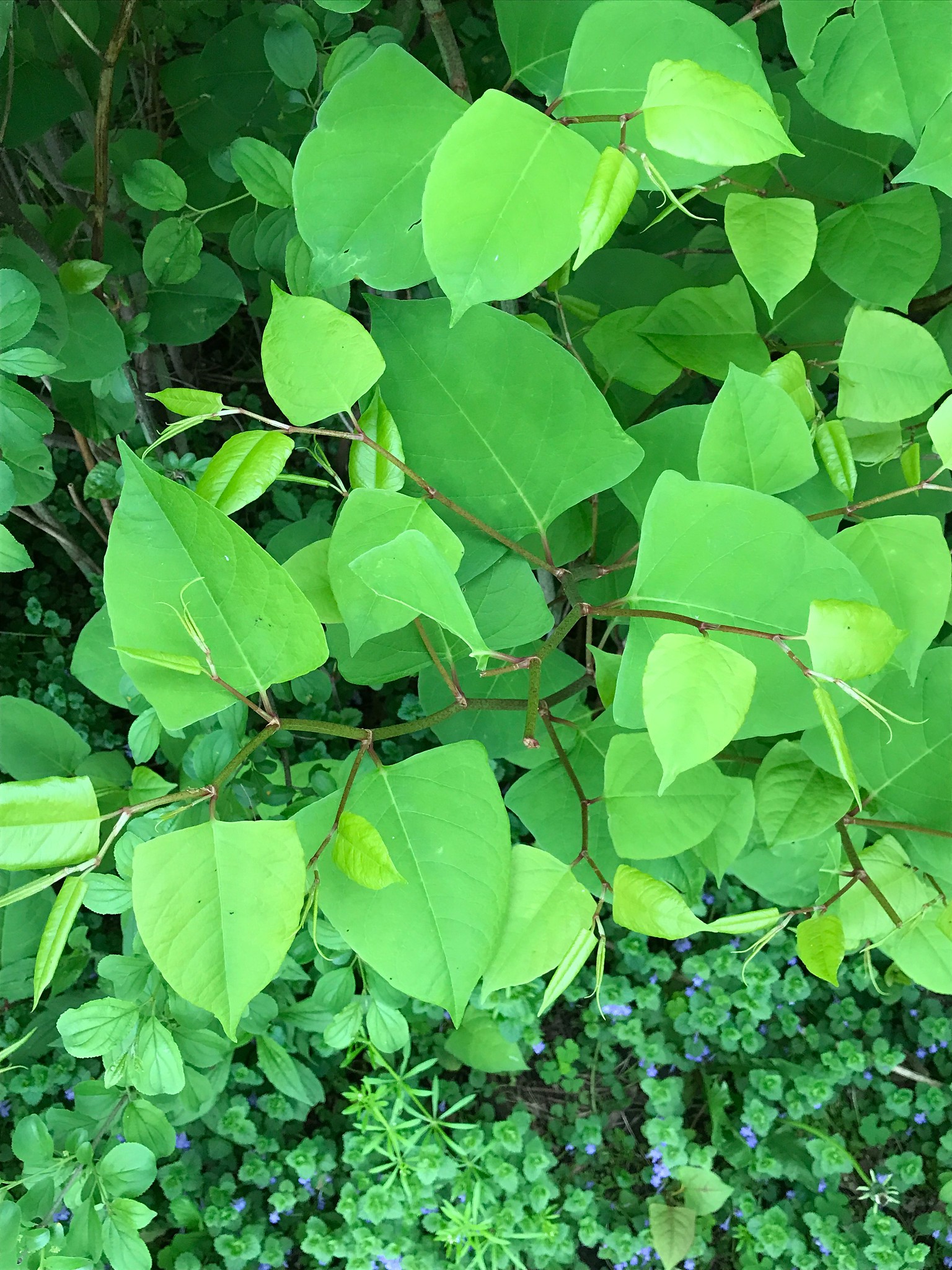Japanese knotweed (Fallopia japonica, F. sachalinensis, F. x bohemica).
Invasive?
Japanese knotweed was introduced to Europe from East Asia in 1823 as an ornamental and garden plant. It and also its genetical intersections (hybrids) can be easily released into the wild, are competitive, and form dense stands that crowd out native vegetation. Although it can grow almost anywhere, all perennial knotweed prefers the banks of streams. The above-ground parts die back in winter, leaving bare banks that are subject to erosion. No seeds are produced, but Fallopia japonica reproduces clonally. Stems and roots easily break into small pieces, and a new plant can regenerate from the fragments. The main ways of spreading are transport of garden waste and soil contaminated with root fragments. If the plant is strongly consolidated on riverbanks, it is also spread by floods and can easily establish itself downstream.
Where?
Like other knotweed, Japanese perennial knotweed colonizes a wide range of habitats, with a preference for moist and nitrogenous soils. It prefers sunny spots or partial shade. This pioneer plant spreads in both ruderal and semi-natural habitats, including riparian areas and open woodlands.
Appearance? Confusion?
The identification of knotweed species is not always easy, especially of the existing very similar looking hybrid. In 2017, the museum was able to show that in Luxembourg the cross F. × bohemica is more common than Fallopia japonica. It is a natural fertile hybrid of Japanese knotweed (Fallopia japonica) and Sakhalin knotweed (Fallopia sachalinensis).
Fallopia x bohemica has characteristics of both Japanese knotweed and Sakhalin knotweed. There are leaves with a rectangular as well as with a heart-shaped base. Often a distinction is not clear, so that finds in doubt can also be called "Fallopia spec."

Differentiation of the leaves
Right-angled leaf base in Fallopia japonica.
"Japanese knotweed, Fallopia japonica" by esagor is licensed under CC BY-NC 2.0.

Heart-shaped base in Fallopia sachalinensis.
"Sakhalin Perennial Knotweed (Fallopia sachalinensis)" by blumenbiene is licensed under CC BY 2.0
This website uses no external trackers, no analytics, just session cookies and values your online privacy.
